At a time when the reconciliation process to bring the different factions in Nagaland together was gaining in ground, the announcement by NSCN (K) and NNC that their respective leaders, SS Khaplang and S Singnya would not be participating in the forthcoming highest-level summit that was expected to take the process of reconciliation to a higher plane has come as a disappointment. Although both NSCN (K) and NNC have stated that their “faith in genuine Naga reconciliation under the aegis of the Forum for Naga Reconciliation remains undiminished,” the fact of the matter is that a strong undercurrent of suspicion is characterising the two group’s relationship with NSCN (IM). Indeed, despite the signing of the Covenant of Reconciliation by NSCN (IM), NSCN (K) and NNC in June 2009, ushering thereby what leaders of the three groups stated as expression of “their solemn commitment to Naga reconciliation and forgiveness based on the historical and political rights of the Nagas,” there is allegation that NSCN (IM) has “violated” the reconciliation process. The latest instance of violation is reportedly the deployment of large numbers of NSCN (IM) armed cadres in Eastern Nagaland (Mon and Tuensang districts of Nagaland and the Naga-inhabited areas of Myanmar that include areas that abut Khaplang’s home in Temuk Tepak Zoku in Myanmar’s Sagaing division) in order to intercept and prevent Khaplang and Singnya from travelling to Nagaland to attend the summit. An added apprehension that has been voiced is that “an order to assassinate the two signatories of the Covenant of Reconciliation [Khaplang and Singnya] can never be ruled out.” While it is not immediately known as to why NSCN (IM) is embarking on a course of action that would lead to an abandonment of the reconciliation process, one aspect that filters through is the possible re-emergence of fissures in Naga polity. However, despite the unfortunate development, NSCN (IM) general secretary, Thuingaleng Muivah has recently stated that his organisation is “willing to walk the extra mile to come to a meeting point.”
The bane of Naga society has been the fractured nature of its polity, a pestilence that seems to surface whenever advancement is made on the unification front, lending credence to the theory that spoiling efforts thrive whenever news of progress is made public. Indeed, the ceasefire with both factions of NSCN came about primarily as a result of in-camera parleys. But, the developments that have taken place post-ceasefire have been in public gaze, leading not only to states like Manipur vehemently protesting the manner in which the entire Naga peace process is being handled, but also alienation of groups within the factions as well. Therefore even as the growing influence of Tangkhuls inside NSCN (IM) is being resented by other tribes in the organisation (primarily because of the fact that they are Nagas of Manipur), NSCN (IM) communiqués have been accusing Khaplang and his faction of joining hands with the Indian security forces in Arunachal Pradesh’s Changlang district. Indeed, NSCN (K) and NSCN (IM) are engaged in a bitter turf war in Tirap and Changlang. Naya and Purana parties, as the NSCN (IM) and NSCN (K) are known in the two districts of eastern Arunachal Pradesh, have not only sought to wrest land and legitimacy in the strategically positioned area, but have also intermittently supported and opposed political forces in the two districts by way of influencing the 12 MLAs of Tirap and Changlang as well as important politicians in Itanagar.
The cracks that are emerging in Nagaland’s polity and in Naga inhabited areas in neighbouring states will have an important bearing not only on the reconciliation process, but also on the dialogue process with New Delhi. A fractured milieu would witness not only the entrance of spoilers from outside, but within Naga polity as well.
The enmity had between Tangkhuls and other tribes inside NSCN (IM) had—on 23 November 2007—led the organisation’s Kilo Kilonser (home minister), Azheto Chophy to walk out of NSCN (IM) with loyalists comprising mainly of cadres belonging to the Sema tribe inside NSCN (IM) in order to form a separate organisation, NSCN (Unification). The revolt by the Sema cadres, it was opined, revealed the schism that characterises both Naga society and polity, particularly between the Semas and the Tangkhuls. Semas have often complained that preferential treatment is given to Tangkhuls in the organisation. Presently, over 70 percent of cadres in NSCN (IM) are Tangkhuls from Ukhrul in Manipur. One of the reasons for NSCN (Unification)’s closeness to NSCN (K) is the predominance of Semas in both the organisations. General Secretary of NSCN (K) Kitovi Zimomi and Azheto Chophy are both Semas from Zunheboto in Nagaland.
Indeed, but for the untiring efforts of civil society in Nagaland, factionalism and fratricidal battle—that had characterised Naga groups a couple of years ago—would have not only torn the fragile Naga polity apart, but would have graduated into a bitter and full-blown civil war. The dialogue process with New Delhi would have been set on the back burner and despite the peace dividend holding together the fragile peace there was a possibility that the ceasefire could have been terminated. But, public opinion inside Nagaland is a conscious entity, and it is this constituency that has realised the danger of dissonance in the polity and has opposed any move that would derail the unity effort. It is, therefore, once again pressuring the groups to bury hatchets and work out a “common Naga agenda.” But tribalism of one form or the other continues to bedevil Naga society and in its latest manifestation a formation called Zeliangrong United Front, encompassing all Zeliangrong Naga areas has come into being. According to press reports, the Zeliangrong United Front has been formed with the slogan, “Zeliangrong Ringtelo,” which literally translated means “long live the Zeliangrong people.” Although the Front was formed with the objective of protecting the Zeliangrong interest, such formations would only contribute to the failure to reconcile the various groups in Nagaland. Furthermore, the 5 March 2011 incident of shoot-out between the cadres of NSCN (IM) and the newly formed Zeliangrong United Front in Khoupum area under Nungba sub-division in Manipur’s Tamenglong district has led to realignment of forces, with NSCN (IM) setting the deadline of 10 March for the Zeliangrong United Front to surrender. The recent conflict would not only lead to a delay in the reconciliation process, but would permit the entry of spoilers and further division and suspicion among the Nagas. New Delhi must realise that its interests lies in cobbling a reconciliation process in Nagaland, and in the ability to showcase to the world that its outlook and disposition towards the periphery are righteous. The entry of foreign NGOs and peace brokers could imperil the frontiers and would set the stage for upheaval. New Delhi must take appropriate steps to pressure all groups in Nagaland to desist from action that would be detrimental to the reconciliation process. Indeed, it must midwife the Covenant of Reconciliation between NSCN (IM), NSCN (K) and NNC and aid bringing about accord so that a united voice can represent Nagaland in what should be the first step towards genuine federalism in India.
However, New Delhi must take into account the subterfuges that NSCN (IM) has been undertaking in the almost 14 year old ceasefire, and take steps to caution the Naga group from continuing with courses of action that would be detrimental to the process of reconciliation and dialogue. Indeed, the position from which New Delhi must bring itself to the negotiating table must be one of unambiguous strength, confronting thereby NSCN (IM) on some of the activities that it is reportedly involving itself in. Some of the aspects that may act as pointers could include:
- a)NSCN (IM) is embarking on, as aforesaid, not only on a course that would imperil Naga unity, but is undertaking action that is tantamount to poaching into the territories of Manipur, Assam and Arunachal Pradesh. It is, therefore, not only trying to elbow into the three states, thereby attempting to pre-empt a future “extension of territory inhabited by Nagas” (which continues to be its raison de etre), but is attempting to influence and bring under its sway groups that are native to such territories. The motivation for such a stratagem is that once dialogue with New Delhi and NSCN (IM) pages itself to the contested sphere of greater Nagalim, NSCN (IM) would be able to display that its demand is fortified by consent and willingness of the local populace and its representatives. The dilemma that New Delhi would be faced with in such a circumstance is whether it would be able to countenance another movement that seeks separation from a parent state in order to join greater Nagalim, or face ire of the majority (as was the case in Manipur in 2001) by agreeing to NSCN (IM) and its surrogate’s demands. After all, the legislatures of Assam, Manipur and Arunachal Pradesh have passed resolutions against inclusion of its territories into Nagaland. But, notwithstanding such decreeing by Dispur, Itanagar and Imphal, the matter that would be summoned for questioning would be the desire of the people of the areas that NSCN (IM) is coveting in the three states. In all probability the engineering that NSCN (IM) has commandeered in the said areas of Assam, Manipur and Arunachal Pradesh has already endeared it to the populace of the coveted areas.
- a) NSCN (IM) has been violating ceasefire rules with impunity. It has not only been recruiting new cadres and sending them for training to field areas in Arunachal Pradesh, Manipur, and Assam—recalling them to Nagaland for rest-refit-turnover after the field postings are over—but are also maintaining camps and safe houses abroad. An absolute mockery has been made of the ceasefire by the Naga group by its non-declaration of camps in Bangladesh such as Galilee, Tindu forest and Salopie, where the NSCN (IM) military leadership send its cadres on regular long-range-patrols, or for the matter its safe houses in South East Asia.
- a)Indeed, it is not only NSCN (IM) that is violating ceasefire rules. The NSCN (K), despite its recent rear-guard action vis-a-vis NSCN (IM)’s military offensives in Eastern Nagaland, is aiding ULFA (anti-talk) faction in the latter’s anti-India actions. The 2nd Battalion HQ of NSCN (K) abuts the 28 Battalion HQ of ULFA, and if latest reports are anything to go by are billeting large numbers of fresh Chinese trained ULFA (anti-talk) cadres in joint camps in Sagaing Division even as Paresh Baruah’s newest recruits form up to enter Assam in the run-up to the legislative assembly elections.
- a)One aspect that New Delhi probably has more information about than other observers pertains to the revelations of NSCN (IM) “head of foreign affairs” Anthony alias Nikkhang Shimray. In NIA custody after his apprehension in Kathmandu, Shimray has reportedly confirmed that groups such as UNLF, PLA of Manipur, ULFA and his own organisation have close connection with China. The Peoples’ Republic, according to Shimray, has reportedly trained and armed a number of batches of insurgents from these groups during the past one and a half years. Shimray has also reportedly said that ULFA chief of staff, Paresh Baruah, UNLF chairman, R K Meghen @ Sanaiyama and he had been to China several times during the last couple of years, following which a host of arms deals were signed in Yunnan. The deals reportedly took place between a fairly anonymous Chinese outfit known as the “Five Tigers.” This arms conduiting organisation reportedly has good access to Chinese ordnance factories such as Norinco, which purchase Chinese PLA arms at cheap rates and sell them to North East insurgent groups, and through the latter to the CPI (Maoists). The arrest of Bangladeshi arms dealer Hafizur Rahman has also reportedly implicated Shimray and Paresh Baruah as the prime recipients of the seized 2 April 2004 arms consignment. Reports seem to also of the opinion that certain North East insurgents are providing details of the Indian Army’s deployment in the North East, in particular about those that face China.
--------------------------------------
Published date : 16 March, 2011


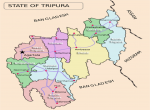
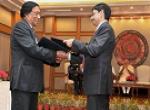
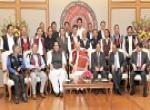
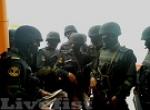
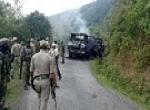
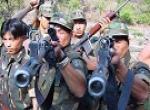
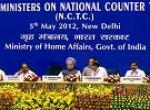
Post new comment